

Himachal Pradesh, located in the western Himalayas of northern India, is a state of stunning natural beauty, rich cultural heritage, and spiritual significance. Known as the "Land of Gods," it is home to numerous ancient temples, snow-capped peaks, and picturesque valleys. The state is characterized by its diverse geography, from the lush green valleys of Kangra to the cold desert of Spiti. From the capital Shimla to the sacred town of Dharamshala, and from the adventure hub of Manali to the apple orchards of Kullu, Himachal Pradesh presents a fascinating blend of traditional life and modern tourism. The state's traditional architecture, vibrant festivals, and warm hospitality are recognized worldwide, while its natural beauty and adventure opportunities make it a premier destination in India.
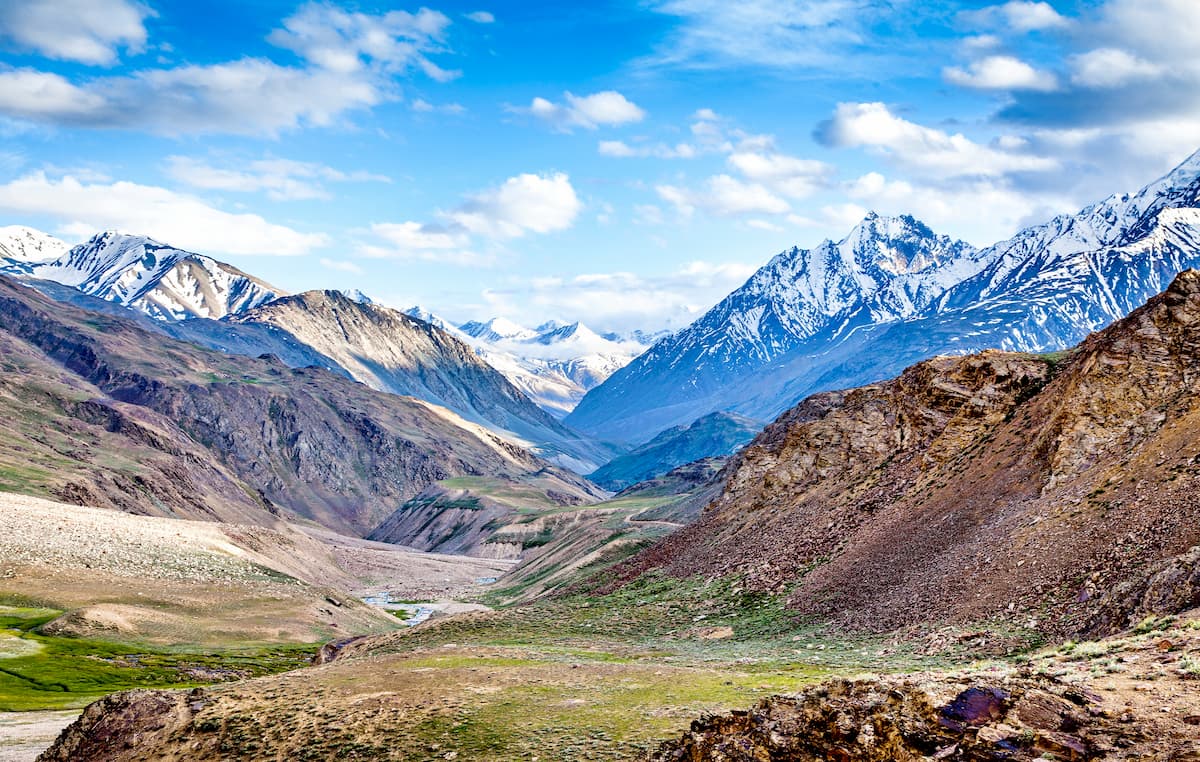
Himachal Pradesh stands as a testament to the rich historical legacy and cultural heritage of the Himalayan region. The region's history dates back to ancient times, with references found in Vedic texts dating to the 2nd millennium BCE. The name "Himachal" means "Land of Snowy Mountains," reflecting the region's geographical character and natural beauty. The state has a recorded history of more than 2000 years, with various small kingdoms and principalities establishing their rule in different valleys.
The region was divided among several small kingdoms known as the Hill States, including Chamba, Bilaspur, Kangra, Mandi, and Suket. These kingdoms developed distinct cultural identities characterized by their Pahari language, customs, and artistic traditions. Himachal Pradesh maintained its traditional governance systems until it came under British influence in the 19th century, and later became a union territory in 1948 and a full state in 1971.
Himachal Pradesh has a rich tradition of temple architecture, folk arts, and cultural practices. The state is famous for its ancient wooden and stone temples, particularly in the Kath-Kuni style of architecture. The traditional music forms, folk dances like Nati, and unique crafts including Kullu shawls, Kangra miniatures, and Chamba rumals are recognized worldwide. The traditional fairs and festivals reflect the deep spiritual connection of the people with nature and deities.
The integration of Hill States into the Indian Union was a gradual process that culminated in 1948 with the formation of Himachal Pradesh as a Chief Commissioner's Province. The struggle for full statehood gained momentum in the 1960s, with various political movements advocating for the recognition of Himachal's distinct identity. After years of effort, Himachal Pradesh became the 18th state of India on January 25, 1971.
The cultural legacy of Himachal Pradesh is rich and diverse, with strong traditions in music, dance, architecture, and crafts. The state is famous for its temple architecture, traditional music, and unique painting styles. Traditional crafts include handloom weaving, wood carving, metal work, and embroidery, which have been preserved through generations and continue to be important economic activities.
Today, Himachal Pradesh takes immense pride in this heritage of cultural richness and historical significance. The state's formation represents the recognition of its distinct identity within the Indian federation. The values of environmental conservation, community living, and spiritual harmony established by traditional practices continue to shape Himachal's identity in the modern era.
The legacy of Himachal Pradesh's ancient kingdoms and cultural traditions is not just historical; it continues to inspire contemporary Himachali identity. The Pahari languages, with their rich oral traditions, remain powerful symbols of cultural pride. The traditional knowledge systems related to agriculture, architecture, and medicine offer valuable resources for sustainable development in the modern context.
Himachal Pradesh is known for its remarkable linguistic diversity, reflecting its rich cultural heritage and geographical variations. The state's language landscape showcases its unique position as home to numerous Pahari dialects and languages, creating a fascinating linguistic tapestry that represents the region's cultural richness.
Hindi serves as the official language of Himachal Pradesh and is used for administration, education, and inter-regional communication. It acts as a common medium that bridges the linguistic diversity among the various regions of the state.
The languages of Himachal Pradesh reflect its unique cultural identity as a meeting point of various linguistic traditions. While Hindi serves as the administrative language, the numerous Pahari languages and dialects showcase the state's incredible diversity. This linguistic richness truly mirrors Himachal's spirit of cultural harmony and preservation of regional identities while embracing broader national integration and development.
Himachal Pradesh is a state where traditional festivals, religious celebrations, and seasonal observances create a vibrant tapestry of cultural expression. The festivals here reflect the state's deep connection with nature, agricultural cycles, and diverse spiritual traditions, creating celebrations throughout the year that showcase Himachal's unique identity as a land where ancient traditions thrive alongside modern life.
Kullu Dussehra is the most famous festival of Himachal Pradesh, celebrated with great enthusiasm in Kullu valley. This week-long festival begins on Vijay Dashami when Dussehra celebrations end in other parts of India. Kullu Dussehra, known for its grand procession of deities, celebrates the victory of good over evil and showcases the unique cultural traditions of the Kullu valley.
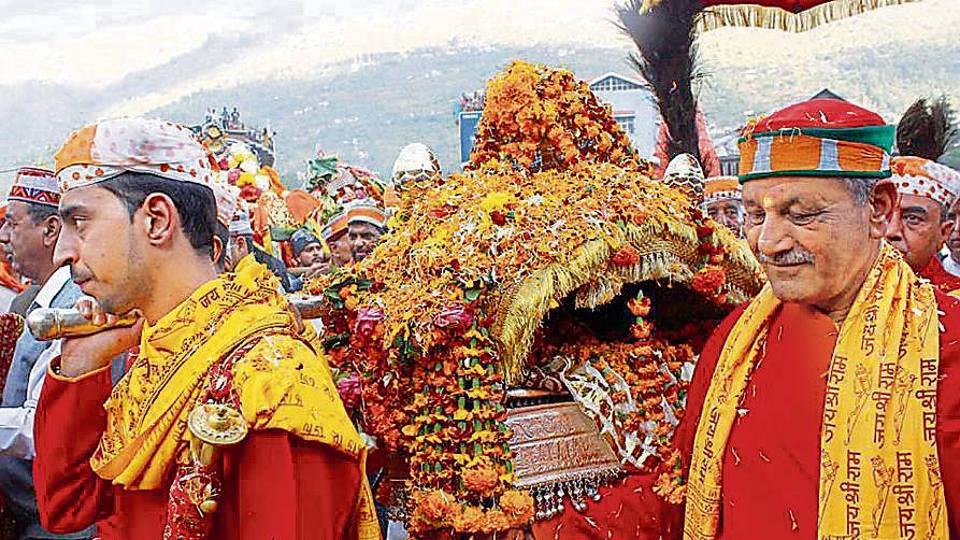
Kullu Dussehra is not just a religious festival but a celebration of Himachali identity and heritage. It brings together communities in a grand display of cultural pride and unity. The festival's unique blend of religious rituals, traditional performances, and international participation makes it the true essence of Himachal's spirit as a society that honors its diverse roots while embracing global connections.
Mandi Shivratri is one of the most important festivals of Himachal Pradesh, celebrated with great enthusiasm in Mandi town. This week-long festival dedicated to Lord Shiva attracts thousands of devotees and features the gathering of numerous deities from across the region. Mandi Shivratri reflects the deep spiritual traditions and cultural heritage of the Himachali people, particularly in the Mandi region.
In conclusion, Mandi Shivratri is not just a religious celebration but a magnificent display of Himachali spiritual values, community bonds, and cultural traditions. It brings together communities in a celebration that has been preserved for centuries, showcasing the unique spiritual fabric of Himachal Pradesh and its people's deep connection with divine traditions.
Mandi Shivratri is more than a religious festival; it is a living tradition that showcases the unique spiritual values of Himachali society. As one of the most important festivals in Himachal Pradesh, it represents the people's commitment to preserving their spiritual traditions while adapting to contemporary life. The festival stands as a testament to the rich cultural heritage that makes Himachal Pradesh unique among Indian states.
Phulaich Festival, also known as Ukyang, is the unique flower festival of the Kinnaur district, celebrated in September. This ancient festival marks the end of agricultural activities and the beginning of the harvest season. Phulaich showcases the unique cultural identity of the Kinnauri people and their spiritual connection with nature and tradition.
Phulaich Festival in Kinnaur is not just a floral celebration but a reaffirmation of Kinnauri cultural identity and environmental values. From the flower collection rituals to the community feasts, every aspect reflects Himachal's identity as a society that values its natural environment and traditional practices. The festival's unique blend of agricultural significance, community values, and connection with nature makes it an essential part of Himachal's cultural calendar.
The festivals of Himachal Pradesh showcase its incredible cultural diversity, agricultural heritage, and spiritual traditions. From the grand Kullu Dussehra that attracts international attention to the regional celebrations like Mandi Shivratri and Phulaich, every festival reflects the state's spirit of unity in diversity. This harmonious coexistence of different cultural traditions makes Himachal Pradesh a unique example of cultural richness in India, where ancient wisdom and modern aspirations blend seamlessly, and where diverse traditions create a vibrant cultural mosaic that is distinctly Himachali.

Himachal Pradesh, known for its stunning landscapes and pleasant climate, boasts urban centers that beautifully blend colonial heritage with traditional architecture. Its cities are not only administrative and economic hubs but also major tourist destinations, where traditional culture coexists with modern amenities. Each city plays a distinctive role in shaping Himachal's character and pride, reflecting the state's journey from princely states to a modern Himalayan state.
Shimla, the capital city of Himachal Pradesh, serves as the political, administrative, and cultural heart of the state. Located in the Shimla district, this historic hill station was the summer capital of British India. Shimla beautifully balances its colonial heritage with modern development, making it one of India's most famous hill stations and the face of modern Himachal Pradesh.
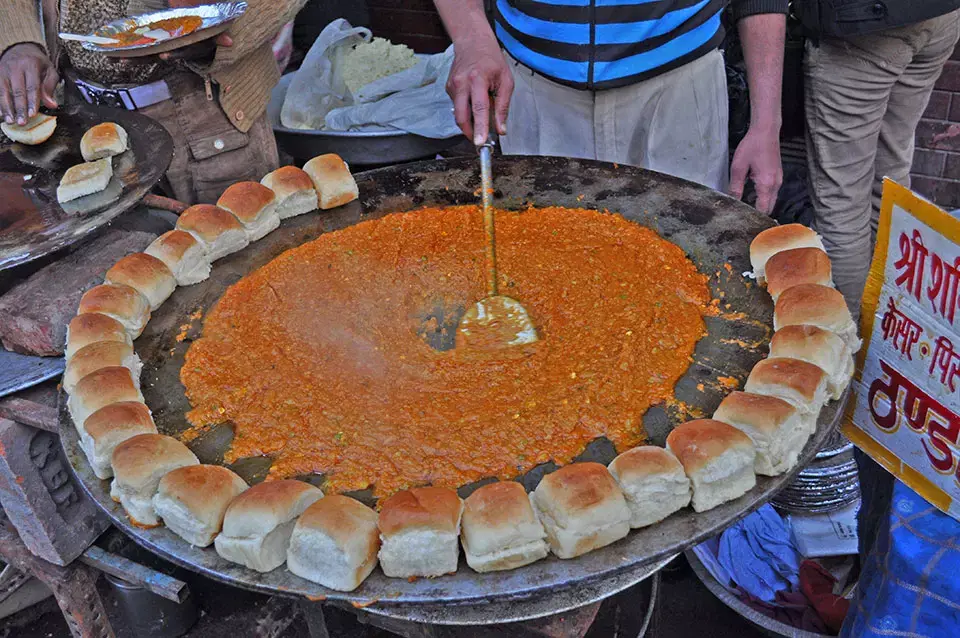
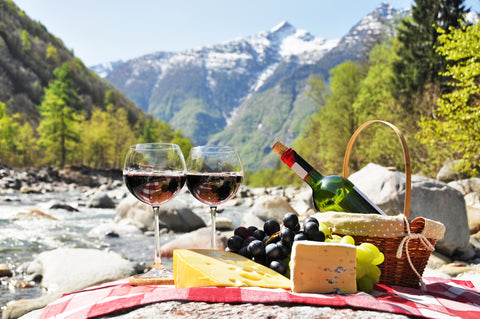
The Ridge in Shimla is the central hub of the city and one of the most prominent landmarks. This large open space offers panoramic views of the surrounding mountains and serves as the cultural and social center of Shimla. The Ridge showcases the colonial heritage of the city while providing a vibrant space for cultural activities and public gatherings.

The Ridge features several important colonial-era buildings including Christ Church, the second oldest church in North India, and the Shimla Public Library. The most significant structures include the Tudor Library building, the Gaiety Theatre, and various government offices that showcase colonial architecture. The space also features viewing points that offer spectacular views of the Himalayan ranges.
The Ridge is not just a tourist attraction but also a living symbol of Shimla's historical legacy and cultural vibrancy. It represents the transformation of Shimla from a small village to the summer capital of British India. The Ridge has witnessed numerous historical events and continues to be the center of cultural activities in Shimla.
The open space is surrounded by shops, cafes, and hotels, making it the commercial and social heart of Shimla. The well-maintained pathways and the pleasant environment make it a popular gathering space for residents and tourists alike. The Ridge also serves as an important venue for cultural events and festivals, including the Summer Festival.
Today, The Ridge stands as a symbol of Shimla's historical legacy and its status as a premier hill station. It represents the vision of the British in creating a summer capital that reflected their architectural preferences and social customs, while serving as an administrative center for decades.
In conclusion, The Ridge is much more than an open space—it is the living heart of Shimla, telling the story of the city from colonial times to the present day, and serving as a bridge between the past and future of this beautiful hill station.
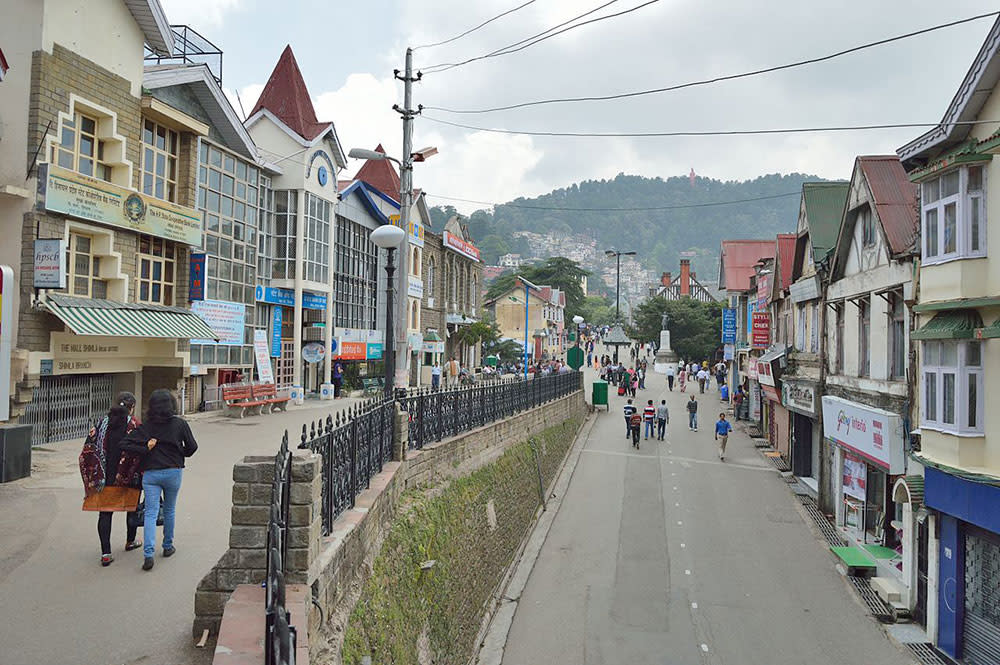
Mall Road in Shimla is the main shopping street and promenade, known for its colonial architecture, vibrant markets, and picturesque setting. This famous road represents Shimla's commercial vitality and colonial heritage, while also serving as a major tourist attraction and social space for both residents and visitors.
The road features numerous shops selling handicrafts, woolen garments, books, and local products. The most famous establishments include the Himachal Emporium, various colonial-era buildings, and numerous cafes and restaurants. The road also features the scandal point, where the Viceroy Lord Kitchener supposedly had a romantic encounter.
Mall Road is not just a commercial area but also an important social and cultural space. The road is closed to vehicles during certain hours, allowing pedestrians to stroll comfortably. The traditional shops, modern showrooms, and the pleasant atmosphere make it a perfect place for shopping and leisure activities.
From a historical perspective, Mall Road represents the commercial development of Shimla during the British era. The road stands as a testament to the British influence on Shimla's urban planning and architecture, while adapting to contemporary commercial needs.
In conclusion, Mall Road is not just a shopping street but a vital cultural and commercial landmark that enhances Shimla's charm and vibrancy. It represents the city's ability to preserve its historical character while serving as a dynamic commercial center for residents and tourists alike.

Christ Church is the second oldest church in North India, located on the Ridge in Shimla. This beautiful church represents the colonial heritage and architectural legacy of Shimla, serving as an important religious site and historical landmark. The church showcases the neo-Gothic style of architecture and reflects the British influence on Shimla's development.
The church features beautiful stained glass windows representing faith, hope, charity, fortitude, patience, and humility. The most significant features include the clock donated by Colonel Dumbleton in 1860, the pipe organ, and the beautiful interior woodwork. The church also features a library with rare books and historical documents.
Christ Church is not just a religious site but also an important cultural institution. The church is closely associated with the history of Shimla as the summer capital of British India. The church's role in preserving colonial history and architecture makes it a vital institution for historical preservation.
From a historical perspective, Christ Church represents the establishment of Christianity in the Himalayan region during British rule. The church stands as a testament to the religious tolerance and architectural preferences of the British era, while continuing to serve the Christian community in Shimla.
In conclusion, Christ Church is not just a place of worship but a vital historical and architectural landmark that enhances Shimla's cultural landscape. It represents the city's commitment to preserving its colonial heritage while serving as an active religious institution for the community.
Jakhoo Temple is an ancient temple dedicated to Lord Hanuman, located on Jakhoo Hill, the highest point in Shimla. This important religious site represents the spiritual heritage of Himachal Pradesh and offers panoramic views of the city and surrounding mountains. The temple showcases the blend of traditional Himachali architecture and natural setting.
The temple features a large statue of Lord Hanuman and traditional Himachali architectural elements. The most significant feature is the location at 2,455 meters above sea level, offering breathtaking views of Shimla and the Himalayan ranges. The temple complex also includes smaller shrines and facilities for pilgrims.
Jakhoo Temple is not just a religious site but also an important cultural and tourist attraction. The temple is associated with the legend of Lord Hanuman stopping at this hill while searching for the Sanjeevani herb. The temple's role in preserving spiritual traditions and attracting pilgrims makes it a vital institution for cultural preservation.
From a historical perspective, Jakhoo Temple represents the ancient spiritual traditions of the Himalayan region. The temple stands as a testament to the deep-rooted religious beliefs of the local people and their connection with natural sacred sites.
In conclusion, Jakhoo Temple is more than just a religious site—it is a symbol of Shimla's spiritual heritage and natural beauty. It represents the understanding that religious sites and natural landscapes can coexist harmoniously, creating a spiritual experience that benefits both pilgrims and nature lovers.
Kufri is a small hill station near Shimla, known for its skiing opportunities, adventure sports, and natural beauty. This popular tourist destination represents Himachal Pradesh's potential for adventure tourism and eco-tourism, while providing recreational opportunities for visitors and supporting local livelihoods.
Kufri features ski slopes of varying difficulty, making it accessible to both beginners and experienced skiers. The most popular activities include skiing during winter, horse riding to Mahasu Peak, and visiting the Himalayan Nature Park. The area also offers beautiful hiking trails and panoramic views of snow-capped mountains.
Kufri is not just a tourist destination but also an important economic resource for the local community. The tourism industry supports numerous local families through hotels, restaurants, adventure sports operators, and guide services. The traditional knowledge of local guides about the mountains represents a sustainable model of tourism development.
The location near Shimla makes Kufri easily accessible while providing a natural retreat from the city. The well-maintained ski facilities, adventure sports infrastructure, and the pleasant environment ensure a comfortable and exciting experience for visitors. Kufri also features the annual Winter Sports Festival, which attracts participants from across the country.
In conclusion, Kufri is more than just a hill station—it is a testament to Himachal Pradesh's natural beauty and adventure tourism potential. It represents the state's commitment to sustainable tourism development, while providing both recreational benefits and livelihood opportunities for local communities.
Shimla is more than just a capital city — it is the dynamic heart of Himachal Pradesh where colonial heritage meets modern development, and where traditional values coexist with contemporary aspirations. From its historical landmarks to its modern infrastructure, from its cultural institutions to its growing economy, Shimla represents the perfect blend of tradition and progress. Truly, Shimla embodies the spirit of Himachal Pradesh as it moves confidently into the future while honoring its rich historical and cultural heritage, serving as a model for sustainable hill station development in India.
Manali, located in the Kullu district, is one of the most popular hill stations and adventure destinations in Himachal Pradesh. This bustling town serves as the gateway to Lahaul, Spiti, and Ladakh, and is known for its stunning landscapes, adventure sports, and vibrant tourism industry. Manali represents the adventure tourism potential of Himachal Pradesh and its ability to attract visitors from around the world.
Manali is not just a tourist destination but also a symbol of Himachal Pradesh's natural beauty and adventure potential. With its stunning landscapes, adventure sports, and growing tourism infrastructure, Manali rightfully earns its place as the adventure capital of Himachal Pradesh, making it a proud representative of the state's tourism capabilities and its journey from traditional mountain society to modern tourism destination.
Dharamshala, located in the Kangra district, is the spiritual capital of Himachal Pradesh and the seat of the Tibetan government-in-exile. This important town serves as the home of the Dalai Lama and a major center for Tibetan Buddhism, while also being known for its natural beauty and colonial heritage. Dharamshala represents the spiritual diversity and international significance of Himachal Pradesh.
Dharamshala stands as a symbol of Himachal Pradesh's spiritual diversity and international significance. From the Tibetan spiritual institutions to the natural beauty, and from the preservation of traditions to the embrace of global spiritual seekers, the town reflects Himachal's potential as a center where diverse spiritual traditions coexist harmoniously. Its role as the spiritual capital makes Dharamshala an essential component of Himachal Pradesh's cultural and spiritual landscape.
The cities of Himachal Pradesh reflect the diverse character and multiple dimensions of the state. While Shimla showcases governance and colonial heritage, Manali represents adventure tourism and natural beauty, and Dharamshala demonstrates spiritual significance and international connections. Together, these urban centers present a comprehensive picture of Himachal Pradesh's journey from princely states to a modern Himalayan state, balancing tourism development with environmental conservation, economic growth with cultural preservation, and local identity with global connections.
The fashion of Himachal Pradesh is a vibrant reflection of its rich cultural heritage, geographical diversity, and traditional craftsmanship. Clothing in the state represents a beautiful display of regional variations, with each district having unique traditional attire, accessories, and ornamentation. From elaborate ceremonial costumes worn during festivals to practical woolen wear suited for the cold climate, Himachal's clothing scene offers a fascinating glimpse into the state's cultural identity and adaptation to mountain life, showcasing how tradition and functionality coexist in this Himalayan state.
Himachali women's traditional attire is a spectacular display of cultural richness, artistic expression, and regional identity. From the elaborate costumes worn during festivals to the everyday wear of rural women, Himachal's female fashion showcases incredible diversity and craftsmanship. These outfits are worn with pride during festivals, weddings, and cultural ceremonies, representing the state's living cultural heritage and the artistic skills passed down through generations of women.

Traditional women's fashion in Himachal Pradesh is a magnificent display of cultural diversity, artistic excellence, and identity pride. From the intricate patterns of traditional garments to the elaborate silver jewelry, and from everyday wear to festival attire, Himachal's female fashion continues to reflect the rich heritage and living traditions of the state's diverse regions. It represents not just clothing but a comprehensive system of cultural expression that connects women to their heritage, community, and artistic traditions, while adapting to contemporary life and changing social contexts.
Himachali men's traditional attire reflects the state's mountain lifestyle and cultural diversity, with distinct styles for different regions and occasions. The clothing varies from practical woolen wear for daily activities to more elaborate ceremonial costumes that showcase cultural identity and social status. Even in modern times, traditional attire is proudly worn during cultural events, festivals, and important occasions, showcasing Himachal's rich sartorial heritage and the practical wisdom embedded in traditional clothing designs.

Traditional men's fashion in Himachal Pradesh is a vibrant expression of the state's cultural diversity and mountain lifestyle. From the distinct regional costumes to practical daily wear, and from ceremonial attire to modern adaptations, each element tells the story of Himachal's complex cultural tapestry and its people's pride in their identity, while demonstrating how traditional clothing has evolved to meet changing needs and contexts while preserving its cultural essence.
Himachal Pradesh is characterized by significant regional variations in traditional attire, reflecting its geographical diversity and distinct cultural zones. The regional fashion of Himachal showcases incredible diversity in terms of materials, designs, colors, and accessories, representing the rich cultural mosaic of the state. From the vibrant costumes of Kullu to the distinctive attire of Kinnaur, regional fashion in Himachal is a living tradition that continues to evolve while maintaining its cultural roots.
Himachal Pradesh's regional fashion is a living heritage of artistic excellence, cultural significance, and community identity. From the intricate handloom weaves to the symbolic patterns, and from traditional dyeing techniques to contemporary adaptations, these textiles not only clothe the people but also tell the story of Himachal's diverse regions, their relationship with the Himalayan environment, and their cultural pride. They represent the state's rich artistic tradition and its potential for cultural preservation and innovation, while serving as a vibrant expression of regional identity in a rapidly changing world.
While Himachal Pradesh is deeply rooted in traditional attire, modern fashion has made significant inroads, especially in urban areas like Shimla, Manali, and Dharamshala and among the younger generation. Today, people creatively blend Western clothing, contemporary Indian styles, and traditional elements to create a unique fashion identity. Himachal's fashion scene reflects its evolving urban culture, youth aspirations, and global connections while maintaining strong cultural roots, creating a dynamic fashion landscape that honors tradition while embracing change and innovation.
Modern fashion in Himachal Pradesh represents a dynamic dialogue between tradition and innovation. While urban youth embrace global trends and new expressions, cultural events and special occasions still honor Himachal's heritage through traditional wear. This creative combination of old and new makes Himachal's fashion scene vibrant and evolving, where clothing becomes a medium of cultural expression, personal identity, and social change, reflecting the state's journey from traditional mountain society to a modern Indian state with a unique cultural identity.
Himachal Pradesh's fashion is a beautiful reflection of the state's cultural diversity, mountain environment, and social evolution. From the intricate traditional costumes of different regions to practical woolen wear suited to the cold climate, and from handloom textiles to modern fusion wear, the state's clothing heritage continues to evolve while maintaining its unique identity. It not only represents the cultural pride of Himachal's diverse communities but also demonstrates their ability to adapt and innovate, creating a fashion landscape that honors the past while embracing the future, much like the state itself which balances its rich cultural heritage with modern development and aspirations.